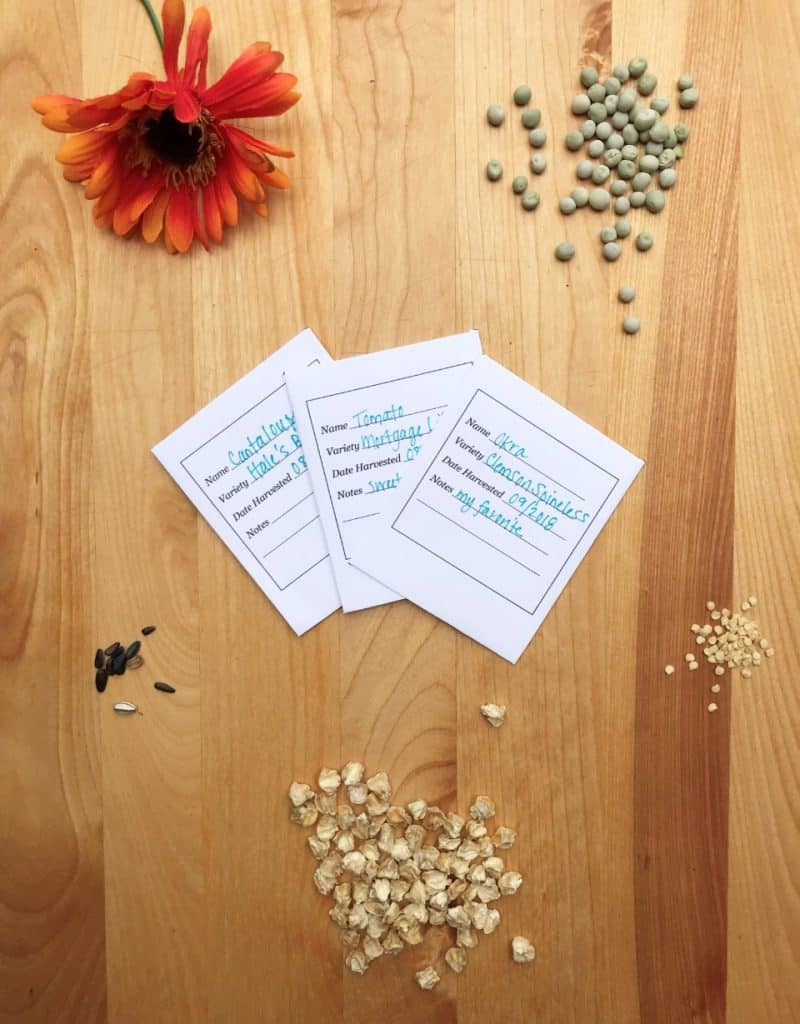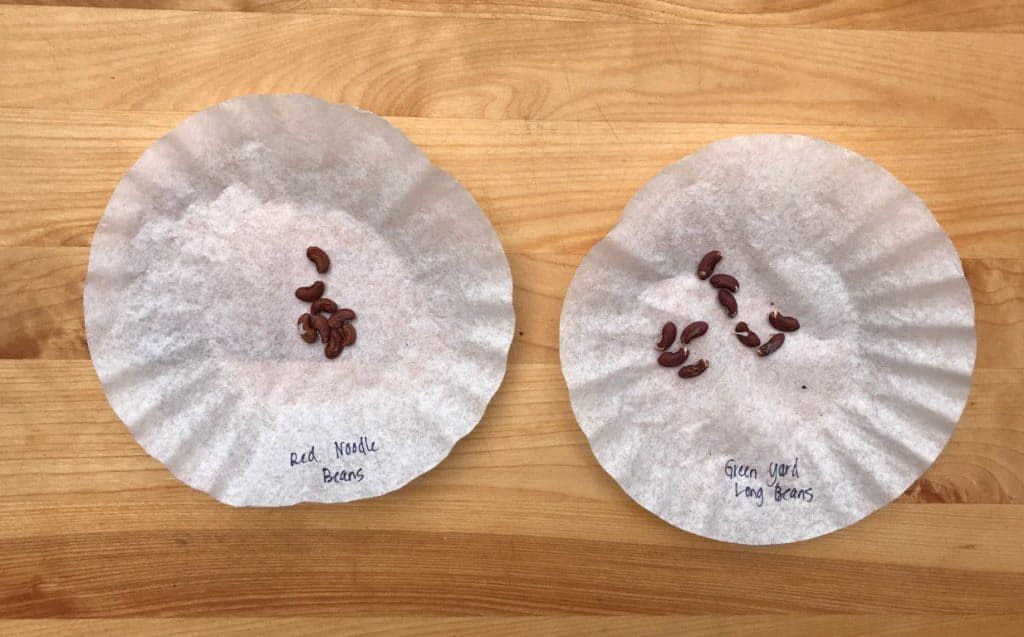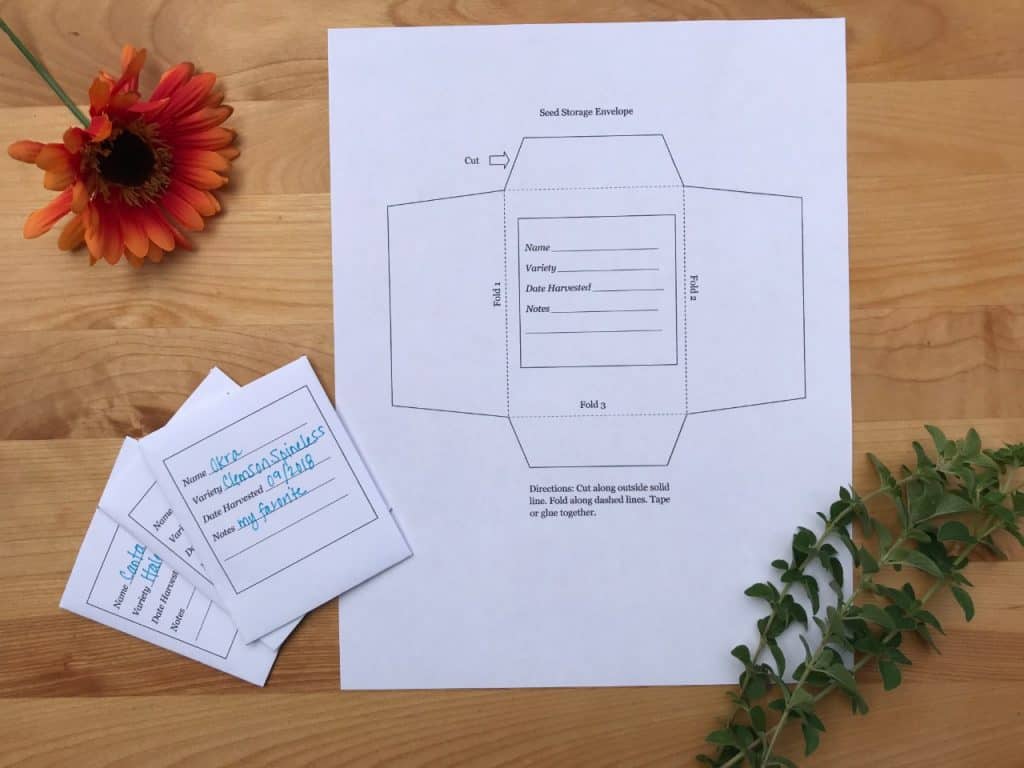Saving Seeds & Proper Seed Storage
Preview: Saving seeds from your garden can save you money. But did you know that you can’t save seeds from ALL plants? Read below to know which seeds to save and how to properly store the seeds for next year.
Saving Seeds? Be Sure to Save the Right Kind
First, you need to decide whether it is even worth saving the seeds. If you planted hybrid plants, there is no reason to save the seeds. Even if you save them and plant them, they likely won’t grow true to what was originally planted. They may be similar, or they could be completely deformed or with no flavor.
But if you planted open-pollinated plants, you CAN save the seeds. However, some crops have seeds that are much easier to save than others. There are also some vegetables that the seeds are easy to save, but are notoriously hard to germinate from saved seed. (Corn, I’m looking at you!)

Some of the easiest plants to save seeds from are:
- tomatoes
- peppers
- beans
- peas
- lettuce
- okra
- marigolds
- melons
- pumpkins
Affiliate Disclosure: Please note that some of the links in this article may be affiliate links and I may receive a small commission if you purchase something through a link. It will not change your cost. As an Amazon Associate, I earn from qualifying purchases. For more information, see my disclosures page.)
How to Harvest the Seeds to Save
There are several ways of saving seeds and the method you use depends on what crop you are saving seeds from.
Let Them Dry On the Plant
The easiest way to save seeds is to let the seeds dry on the plant. For beans and peas, this method works well. Leave a few plants in the ground and allow the vegetables to dry up. Once dry, harvest them and bring them indoors.
Shell the beans or peas and lay the seeds on a coffee filter to dry for a week or so. Then store as suggested below.
Note that when you allow the plants to go to seed, they will quit blooming and producing edible vegetables. It may be a good idea to plant some extras so that it doesn’t affect your harvest.
This is also the method you should use for squash, however, it can be a bit trickier to harvest these seeds. First, the plants need to be isolated from other varieties since squash readily cross-pollinate. (You can also use a grow tunnel and hand pollinate your squash.)
Then, you need to allow the vegetables to develop a hard outer rind. Once they have a hard rind, halve the squash and scoop out the seeds.
Next, place the seeds in a jar and cover them with water. Allow them to ferment for 2-4 days. Remove any seeds that float. The viable seeds should sink to the bottom.
Drain and rinse well. This should remove the remaining squash pulp from the seeds. Spread the seeds out on a coffee filter in a single layer and allow them to dry for a week.
Check daily and remove any seeds that show any signs of mold. Store as normal. (Some people also use this method for tomatoes.)

Harvest Fruit and Dry Indoors
For other vegetables like tomatoes and peppers, you harvest the fruit and then remove the seeds. Cut open the tomato or pepper when ripe and remove the seeds.
Place on a coffee filter to dry for a week or two. You can break a seed open to see if it is completely dry. It should snap cleanly in half, not bend. Once dry, store as explained below.
Pull Up the Plant
If a frost threatens, a third option for saving seeds is to pull up the entire plant. Hang the plant upside down in a cool, dark location until the vegetable has dried out. This method works best for beans and peas.

How to Store Seeds
Harvesting and drying seeds is only part of the process. Properly storing the seeds is key to ensure germination next year. To store the seeds, they need to be thoroughly dry. Any excess moisture can cause the seeds to mold.
Spread the seeds on waxed paper or coffee filters to dry out. You can dry seeds on paper towels too, but some seeds such as tomatoes tend to stick. Once the seeds are dry, they need to be KEPT dry.
One of the best ways to store seeds is in individual paper packets. Label each packet with the flower or vegetable name, variety, and the date you harvested the seeds, and any other notes you want to include.
Other information that can be included is the number of plants you harvest the seeds from and whether or not they were isolated from other varieties.
Seed storage packets can be purchased on Amazon.

Once you have the seeds packed in envelopes, store them in a tightly sealed container. Of course, my favorite is a mason jar. Since seeds should be kept in a cool, dark place, between 32 and 41 degrees, your refrigerator is the best place to store them. This is also the best way to store purchased seeds.
How Long Do Stored Seed Last?
PROPERLY stored seeds can remain viable for many years. However, some vegetable seeds last much longer than others. As each year passes, you can expect the rate of germination to decline. However, there is no harm in planting old seeds. Those that do germinate, will produce nutritious vegetables.
My advice, if you have room, is to store the old seeds until next year. Unless you didn’t like the variety you grew, there is no need to toss the seed. Plant the crop a little thicker next year or plant a few extras. You might be pleasantly surprised. I planted some 6 year old Asian cabbage this year and couldn’t believe how many plants came up!
While opinions can differ, from my research and testing, these lists can give you an idea of how long to store your seeds.
Seeds That Don’t Store Very Long (Less than 2 years)
- onions
- corn
- peppers
If you keep seeds from these longer than 2 years, you may have a few that do germinate, but don’t expect huge rates of germination.
Seeds That Can Be Stored 3+ Years
- tomatoes
- beans
- peas
- cucumbers
- chard
- celery
- cabbage
- Brussels sprouts
- eggplant
- radish
- pumpkin
- squash
Have You Thought About Saving Seeds?
Saving seeds can save you money, but only if stored properly. Otherwise, you are wasting time and refrigerator space. Do you grow any crops just for seed saving? What kinds of seeds do you save?
Related Posts
- When you are ready to plant those seeds next year, check out my post on Starting Vegetables From Seed.
- Learn how to collect & save Zinnia seeds
- The best heirloom vegetables for beginners to grow
